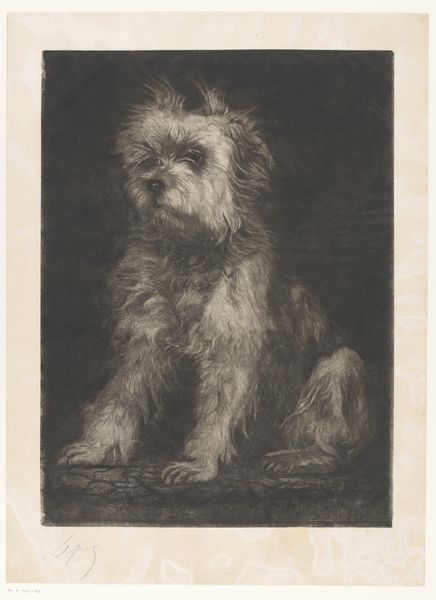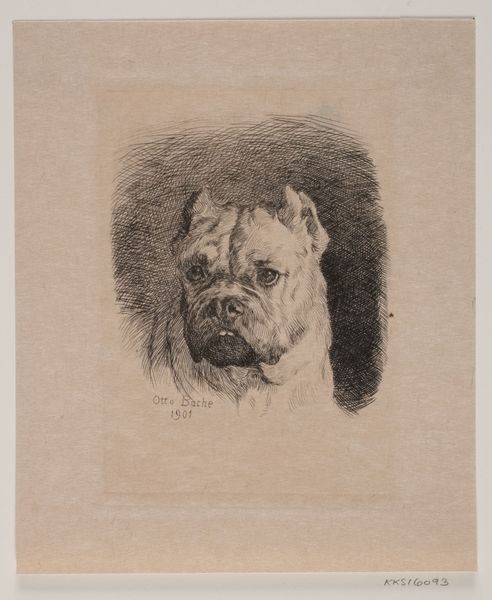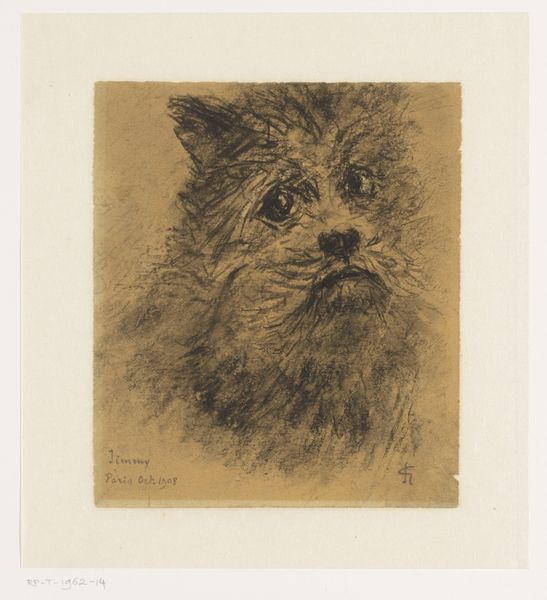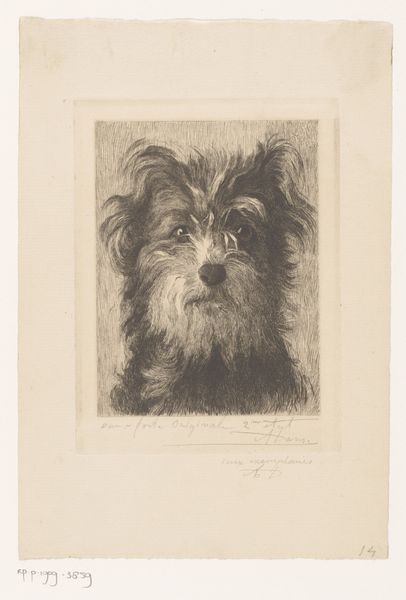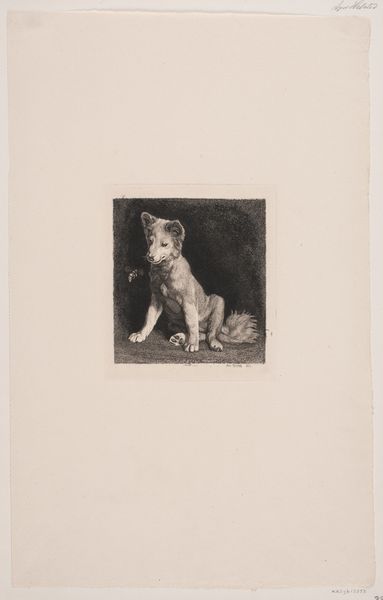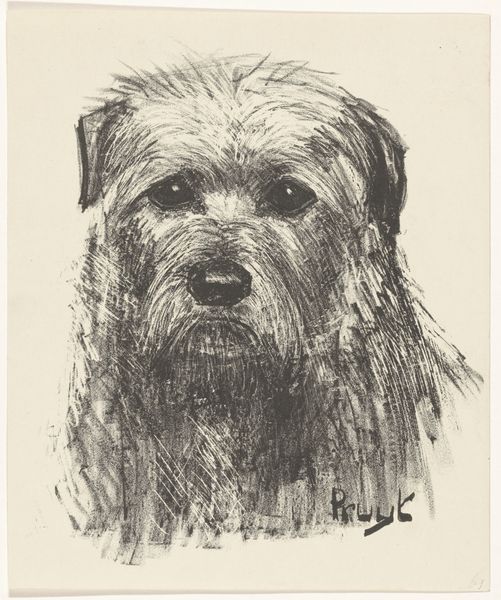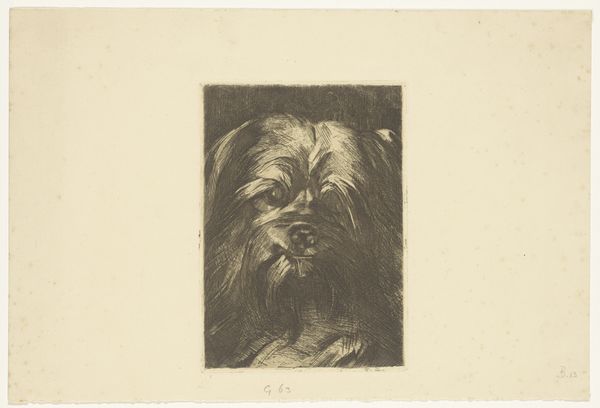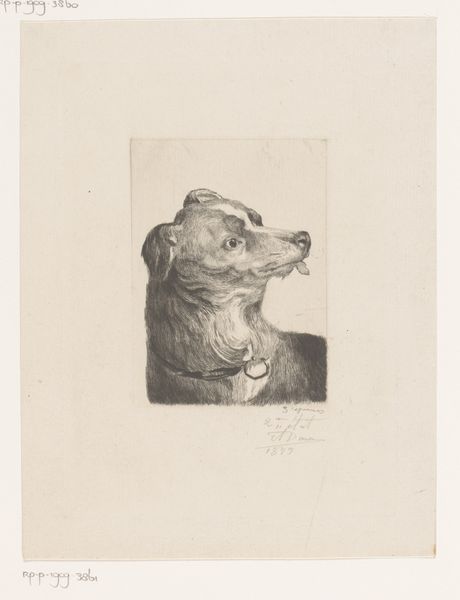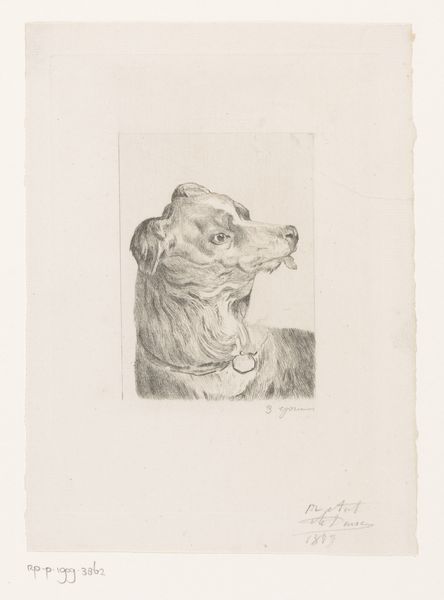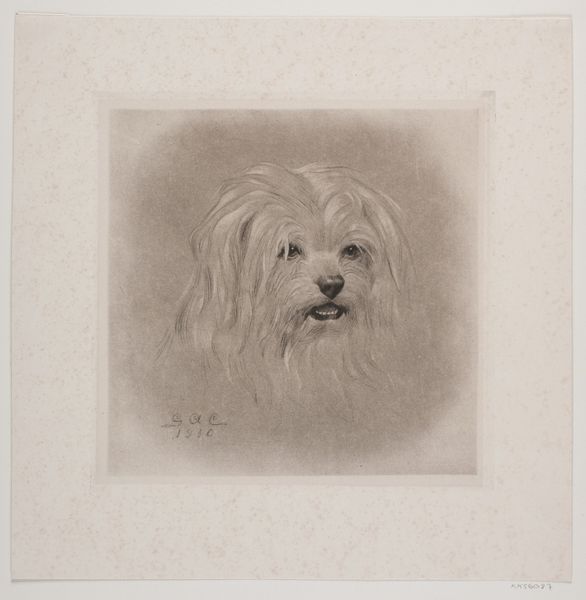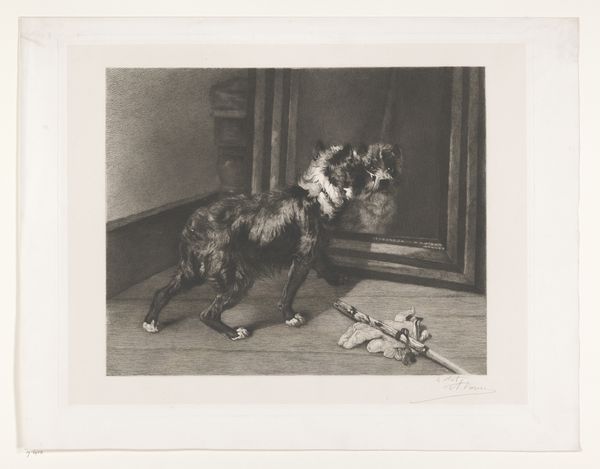
drawing, graphite
#
portrait
#
pencil drawn
#
drawing
#
dog
#
pencil drawing
#
graphite
#
realism
Dimensions: height 355 mm, width 255 mm
Copyright: Rijks Museum: Open Domain
Curator: Let's consider this drawing by Willem Witsen: "Portrait of the Dog Phoebus," created in 1884, now residing at the Rijksmuseum. It's executed in graphite and pencil on paper. Editor: My immediate impression is how subdued the color palette is. There’s a gentleness in the gradations, despite the darkness of the background. Curator: Right, Witsen’s social circle provides an interesting lens. As a member of the Amsterdam Impressionism movement and connected to literary figures, his artistic choices could reflect a cultural fascination with domesticity and bourgeois life, even extending to pets. How might the social status reflected by pet ownership contribute to understanding this piece? Editor: Certainly. The somber color choices create a restrained quality that speaks to formal portraiture, yet the informality and fluffiness of Phoebus complicates the traditional interpretation of the drawing. The pencil strokes capture the textures of the dog's fur and lend an almost tangible softness, wouldn’t you say? Curator: I do, and beyond technique, let’s consider how dogs are historically and culturally loaded. The dog’s image reflects ideas about companionship, loyalty, and power dynamics inherent in human-animal relations. How does Witsen perhaps comment on or challenge those power dynamics within a Dutch upper-class context? Editor: Interesting. Considering the materiality of the drawing, one has to marvel at the skill in rendering tonal variations using what seems to be solely pencil. This speaks volumes about Witsen's mastery of technique and an appreciation for the graphic arts at the time. Semiotically, the dark ground might represent obscurity—while the well-lit dog, enlightenment or a light in the darkness, considering his name. Curator: Precisely, Phoebus was also the Greek god of light. But beyond that, do we consider who in Dutch society in 1884 was allowed access to light? Who gets memorialized, not just through oil on canvas but also a pencil portrait? Whose stories get told? Editor: That contrast is precisely the power of a close read, allowing space for many points of entry. Considering the subtleties of execution, this simple dog portrait really asks profound questions.
Comments
rijksmuseum about 2 years ago
⋮
Willem Witsen made this watercolour in 1884, his last year as a student at the Amsterdam Rijksakademie van beeldende kunsten. The young artist was then already a superb watercolourist. He painstakingly drew the fine hairs in front of the dog’s eyes, cleverly taking advantage of the white of the paper. The sitter is a little dog, and an old one judging from its right eye, which shows signs of cataracts.
Join the conversation
Join millions of artists and users on Artera today and experience the ultimate creative platform.

